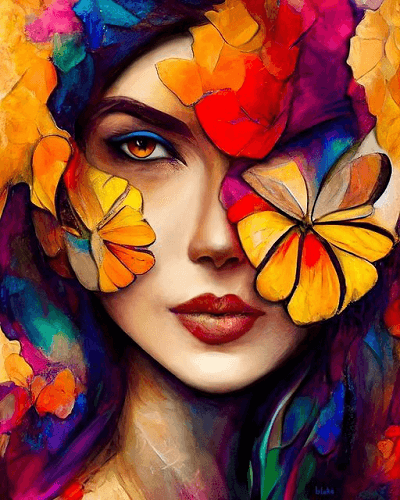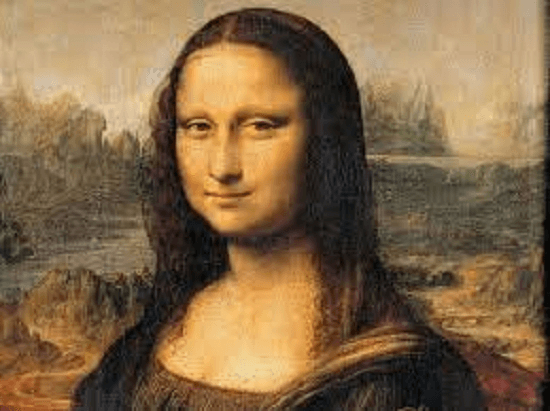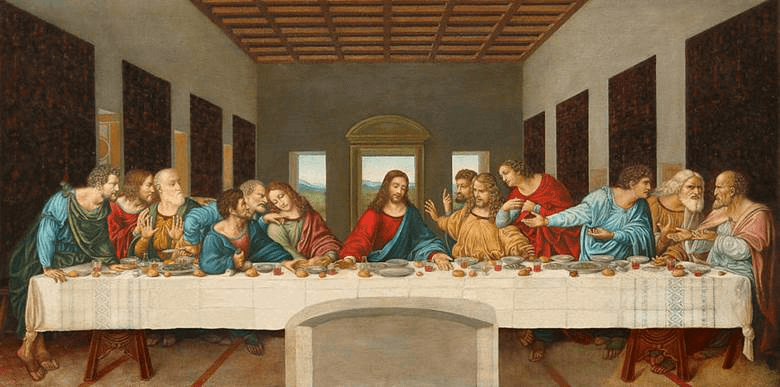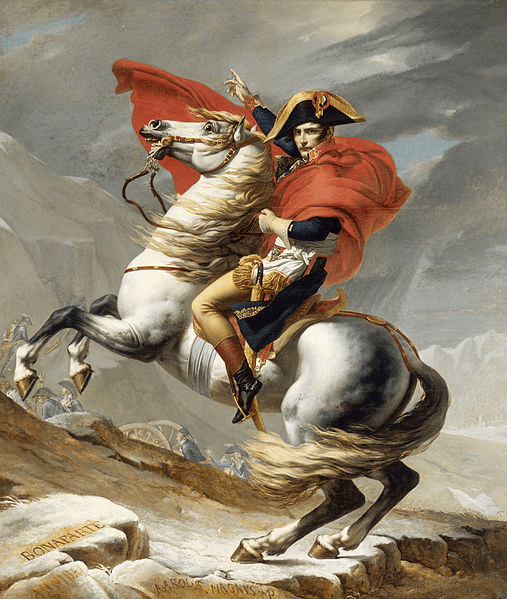Art DefinitionWhat is Art?Art is a broad term that encompasses a wide range of human activities and creations, including painting, sculpture, photography, literature, music, dance, architecture, and film. It can be a powerful and meaningful form of communication, expression, and creativity. Art can evoke emotions, tell stories, and explore ideas. It can be a way to make sense of the world, explore identity and culture, and express feelings. It can also be used to create beauty and bring joy. 
History of ArtThe history of art is an ancient one. Humans have been creating art for centuries, with evidence of some of the earliest artworks dating back to 40,000 years ago. Throughout the ages, art has been used to document and communicate important events, express religious beliefs, and explore ideas. Today, art is still used in many ways, but it is also used to create beauty, explore identity, and make statements about society. The definition of art is contested and has changed over time. The term "art" has been used to refer to any activity or product that has aesthetic or intellectual value. This can include activities like drawing, painting, sculpting, and products like photographs, films, and sculptures. More recently, the definition of art has been expanded to include activities like performance art, digital art, and installation art. Value of ArtThe value of art is subjective and can depend on the context and the individual. Some artworks are considered timeless and universal, while others are controversial or divisive. Art can also be used to spark discussion and debate or to explore personal identity. The importance of art is often overlooked in today's world. Art can unite people from different backgrounds and cultures, bridge the gap between generations, and help people express their feelings. It can also inspire creativity, provide comfort, and foster understanding. Art can create beauty, tell stories, and explore ideas. It can also comment on society and challenge existing norms and beliefs. At its core, art is about communication and expression. It is a way for people to share their ideas, feelings, and experiences. It can also be used to explore identity and culture, to bring joy and beauty, and to foster understanding and empathy. Art can move people, bring them together, and spark important conversations. Some of the Most Famous Arts in the World
Some of the most famous artworks in the world include:
Some of the Most Known Artists in the World
Which Country is Most Famous for Art and Why?Japan is one of the most famous countries when it comes to art. This is largely due to the country's long and rich art history, which has continuously evolving for centuries. Japan has various traditional art forms, including calligraphy, painting, sculpture, pottery, woodworking, textiles, and more. Japan is perhaps best known for its woodblock prints, known as ukiyo-e, popularized in the late 17th century. Ukiyo-e prints are typically colourful, highly-detailed images of nature, people, animals, and everyday life. Japan is also home to several prestigious art schools, such as, the Kyoto University of Art and Design, and the Musashino Art University. These universities offer a range of art courses and have produced some of the world's most renowned artists. Other cultures, such as Chinese, Korean, and Indian art, have heavily influenced Japanese art. This has led to a unique style that combines traditional Japanese elements with foreign influences. Japan has also produced some of the world's most iconic artworks. Paintings by ukiyo-e master Katsushika Hokusai, such as "The Great Wave off Kanagawa," are among the world's most recognizable works of art. The country is also home to iconic sculptures such as the "Great Buddha of Kamakura," a bronze statue dating back to 1252. Modern Japanese art is also highly acclaimed and is known for its innovative use of new materials and techniques. Contemporary Japanese artists, such as Yayoi Kusama and Takashi Murakami, are some of the most renowned in the world. We can say that, Japan is one of the most famous countries for art. This is due to its long and rich history of traditional art forms, renowned art schools, and iconic artworks. Other cultures have influenced the country, leading to a unique art style. Furthermore, modern Japanese artists are highly acclaimed and are known for their innovative use of materials and techniques. Purpose of Art?Art expresses creativity and imagination, stimulating the viewer's senses and emotions. It has the potential to evoke a wide range of feelings, from joy and inspiration to sadness and contemplation. Art is often used to convey a message, tell a story, or evoke an emotion. It can also be used to bring attention to an issue or to entertain. 
Art is a form of communication that aims to convey an idea, feeling, or experience to the viewer. Artists can visually represent a concept or emotion through colours, lines, shapes, and textures. Art can also be used to make a statement about a particular issue or to challenge the status quo. Art is also used to express ideas, values, and beliefs. By exploring different materials and techniques, artists can create unique works of art that reflect their styles and ideas. Art can communicate a message of hope, peace, or justice or draw attention to an issue. Art also has the power to bring people together. By creating an environment where people from different backgrounds, cultures, and beliefs can share their ideas, art can help bridge the gap between different cultures and beliefs. Art can also be used to celebrate a particular event or to commemorate the life of a loved one. Types of Art?There are many different types of art, and the type of art someone is drawn to depends on their preferences. The following list outlines some of the most popular and well-known types of art.
No matter which type of art someone is drawn to, it is important to remember that art is a form of personal expression and that there is no right or wrong way to create art. Each type of art has unique characteristics, and it is up to the artist to decide how they want to express themselves through their artwork. Do Art Culture Fading Away in the 21st Century?No, art culture is not fading away in the 21st century. It is thriving. The digital age has made art more accessible than ever, with more people now able to create and share art in impossible ways. Technology has also made it easier for artists to reach larger audiences and for art to reach a global audience. Furthermore, the emergence of social media has allowed more people to engage in meaningful conversations about art and culture, which can help to preserve and promote art culture. Some of the Most Famous Indian Arts?The most famous Indian art includes the Ajanta Caves murals, the Taj Mahal, the Ellora Caves reliefs, Mughal miniature paintings, traditional Madhubani paintings, and modern Indian artist M.F. Husain's paintings. The Ajanta Caves are a complex of Buddhist cave temples in the Aurangabad district of Maharashtra, India. The caves contain some of the earliest known and finest surviving examples of Buddhist art and architecture, with decorated walls and ceilings depicting stories from the Jataka tales. The Taj Mahal is a white marble mausoleum in Agra, India, built by Mughal Emperor Shah Jahan in memory of his favourite wife, Mumtaz Mahal. The Ellora Caves are a complex of Hindu, Buddhist, and Jain cave temples located near Aurangabad in Maharashtra, India. The caves contain some of the most impressive examples of Indian rock-cut architecture, with many sculptures, reliefs, and paintings. Mughal miniature paintings were highly influenced by Persian miniature paintings and were popular during the Mughal Empire. Madhubani paintings are a traditional style of Indian art originating from the Mithila region of Bihar, India. These paintings are characterized by bright colours, intricate designs, and bold black outlines and depict scenes from Hindu mythology. Modern Indian artist M.F. Husain's paintings are some of the most celebrated works of Indian art. His works are bold and bright. How 21st Century is For Artists?The 21st century is an exciting time for artists. Technology has made it easier for artists to create and share their work with a global audience, and social media has allowed for more meaningful conversations about art and culture. Additionally, the internet has made it easier for artists to find and connect with other artists, collaborate on projects, and gain exposure to their work. Finally, the internet has also allowed for more opportunities for artists to connect with businesses and find ways to monetize their work. How has the Face of Art Changed in the 21st Century?The face of art has changed significantly in the 21st century. Technology has allowed art to become more accessible than ever, with more people now able to create and share art in ways that were impossible before. The digital age has allowed art to become democratized, with anyone able to create and share their art with a global audience. Additionally, the internet and social media have allowed for more meaningful conversations about art and culture, which can help to preserve and promote art culture. Moreover, the emergence of digital tools and platforms has enabled artists to explore new mediums and create art in new ways. For example, digital tools such as Adobe Creative Cloud have made it easier for artists to experiment with digital art. In contrast, 3D printing and virtual reality have enabled artists to create art in three-dimensional form. Furthermore, digital tools have made it easier for artists to collaborate on projects and gain exposure to their work. Finally, the internet has also enabled new ways for artists to monetize their work, from selling their art online to crowd-funding platforms. This has allowed for more creative freedom and the ability for artists to pursue their craft on their terms. Some Controversies Around Art?Art is a broad and subjective concept, and opinions can often differ greatly. This has led to several controversies in the world of art. One of the biggest debates involves the definition of 'good' art. Some believe art should be judged according to certain criteria, such as technique and skill. In contrast, others believe art should be judged according to its aesthetic value or the emotional response it elicits in the viewer. This debate has been ongoing for centuries, and there has yet to be a clear consensus on what constitutes 'good' art. 
Another major controversy in art is the use of public funds to support and promote art. Some argue that public funds should be used to support artists and art institutions. In contrast, others argue that public funds should support other, more 'worthy' causes, such as healthcare, education, or infrastructure. The use of controversial subject matter in art is another common source of debate. Many artists use their art to explore difficult or taboo topics, such as religion, politics, sex, and violence. Some people argue that art should not be used to explore such topics, while others argue that art has the potential to be a powerful tool for exploring and discussing controversial issues. Debates around the ownership of art are common. Art theft is a serious problem, and several legal debates surround who owns the rights to certain works of art. These debates have been further complicated by the rise of online art sales, as some artists argue that their works should be protected from unauthorized reproduction. Overall, the world of art is full of debate and controversy. From debates about the definition of 'good' art to the ownership of art, several issues are constantly being discussed and debated by people from all walks of life. ConclusionArt is an incredibly powerful and meaningful communication and expression. It has been used for centuries to document and communicate important events, explore identity and culture, and express feelings. It can also be used to create beauty and bring joy. Art can bring people together, foster understanding, and spark conversations. It is an important part of our lives and should be celebrated and appreciated.
Next TopicArticle Definition Grammar
|
 For Videos Join Our Youtube Channel: Join Now
For Videos Join Our Youtube Channel: Join Now
Feedback
- Send your Feedback to [email protected]
Help Others, Please Share










